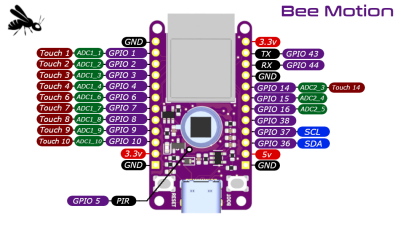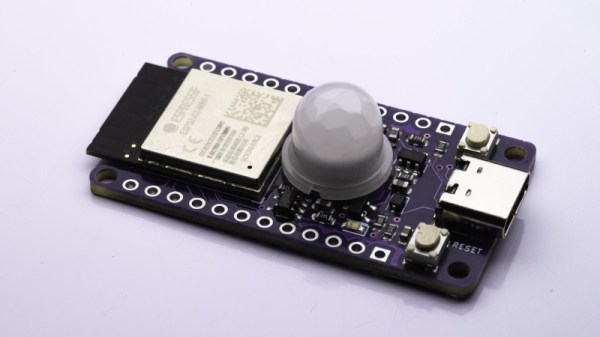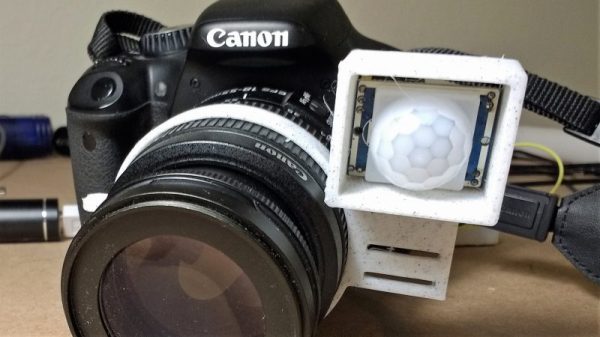There’s no shortage of ESP32 development boards out there, with many of them offering some “killer app” feature which may or may not align with whatever it is you’re trying to do. But if you’ve got a project that could benefit from the pairing of a powerful WiFi-enabled microcontroller and a passive infrared (PIR) motion sensor, the Bee Motion created by [Paul Price] is certainly worth a close look.
 This breadboard compatible package combines an ESP32-S2 module with a top-mounted PIR sensor, making it a turn key solution for all sorts of motion sensing projects. In addition to the expected onboard voltage regulation, there’s also a LiPo charge controller and status LEDs for mobile or battery-backed operation.
This breadboard compatible package combines an ESP32-S2 module with a top-mounted PIR sensor, making it a turn key solution for all sorts of motion sensing projects. In addition to the expected onboard voltage regulation, there’s also a LiPo charge controller and status LEDs for mobile or battery-backed operation.
While there’s far too many variables involved for [Paul] to give a specific runtime for the Bee Motion, he’s run some numbers and found that a 1500 mAH cell could potentially keep the board running for over a year if you’re taking advantage of the MCU’s deep sleep capabilities. When it’s time to recharge, whenever that may be, the board’s USB-C connector means you won’t be searching around for the proper cable.
Schematics and CAD files are available in the Bee Motion GitHub repo, and [Paul] is also selling assembled boards on Tindie. All you need now is to get inspired by some of the slick PIR projects we’ve covered in the past.
Continue reading “Bee Motion Combines ESP32 With PIR Sensor And USB-C”













